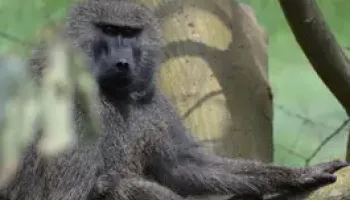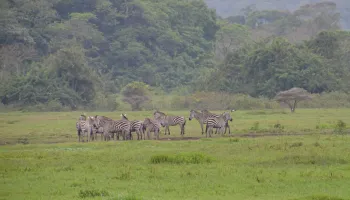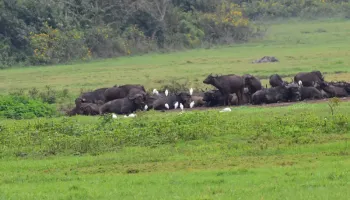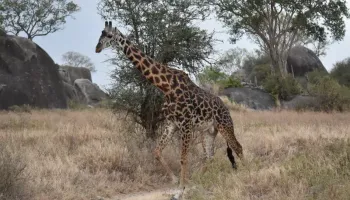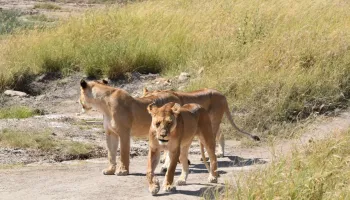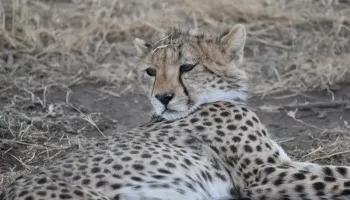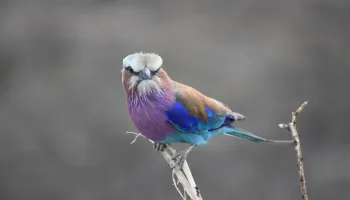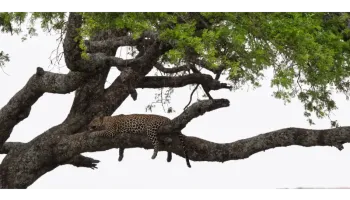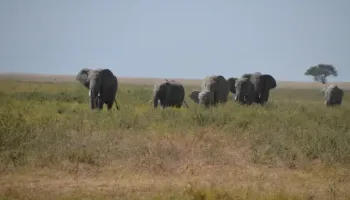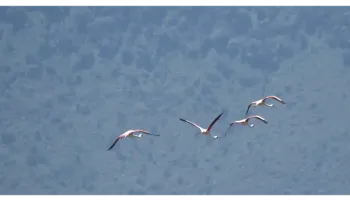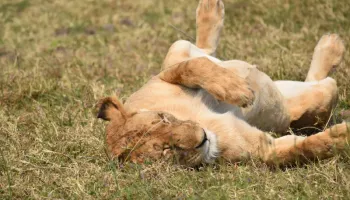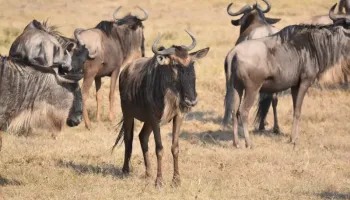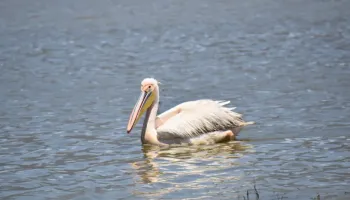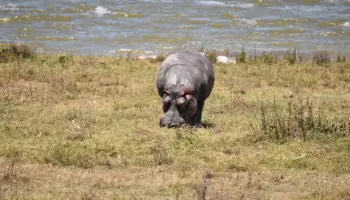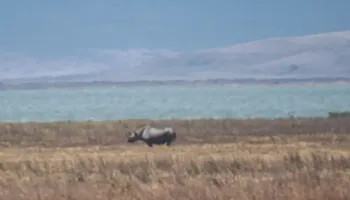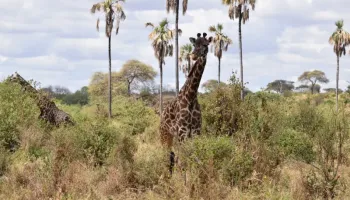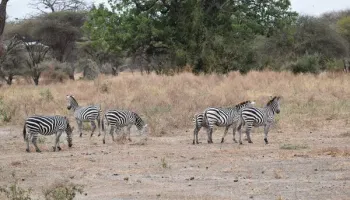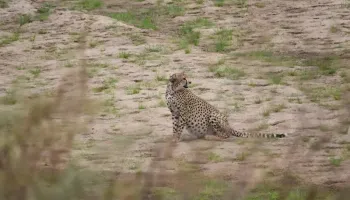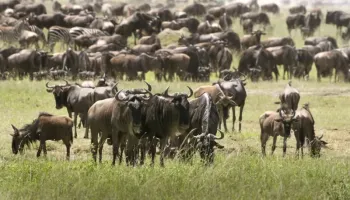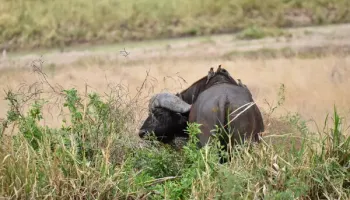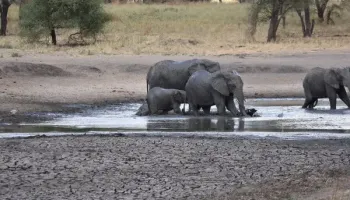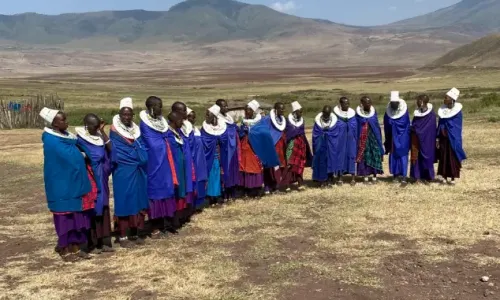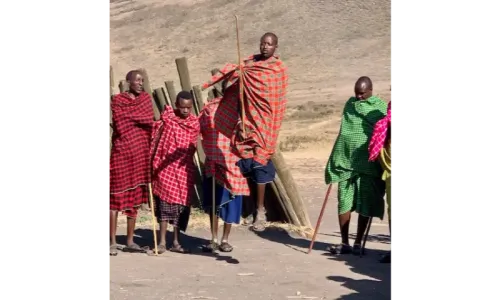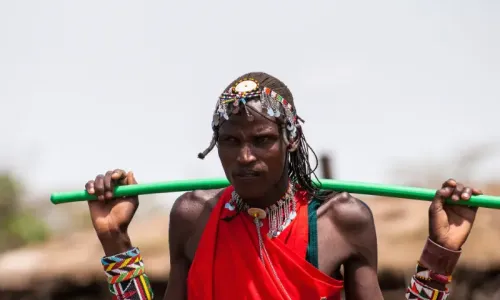TRR-Safari Photo Gallery
Impression wildlife Tanzania National Parcs we visit with you
Arusha NP
Arusha National Park in Tanzania is a hidden gem that offers a diverse and enchanting experience for nature lovers and adventurers alike. Nestled at the base of the majestic Mount Meru, this park is a scenic paradise with its lush forests, shimmering lakes, and wide variety of wildlife. Unlike other parks in Tanzania, Arusha National Park combines a beautiful blend of mountain scenery, savannah, and rainforest, making every corner of the park a discovery.
Visitors can explore the peaceful shores of Momella Lakes, where flamingos and other water birds congregate, or take in breathtaking views of Mount Kilimanjaro from the park’s vantage points. You’ll also encounter zebras, giraffes, buffalos, and playful black-and-white colobus monkeys in the treetops. For those seeking an off-the-beaten-path adventure, a trek up Mount Meru offers a rewarding challenge and stunning panoramic views.
Whether it’s hiking, canoeing, or game drives, Arusha National Park is a serene and captivating destination. Experience Tanzania’s rich natural beauty in a more intimate and tranquil setting.
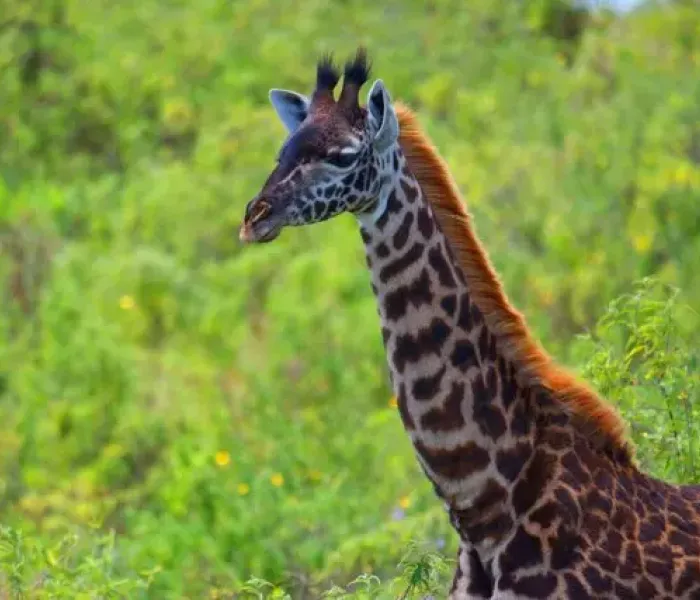
The Giraffe in Arusha National Park
In Arusha NP, the Masai giraffe (Giraffa camelopardalis tippelskirchi) is the primary subspecies found. Known for their distinctive jagged, leaf-shaped spots, these giraffes can grow up to 5.5 meters tall, with males generally being larger than females. Their long necks are an evolutionary adaptation, allowing them to reach leaves and buds high in the trees that are inaccessible to other herbivores.
The giraffe plays a critical role in the park’s ecosystem by pruning trees, which helps maintain the balance of vegetation and creates habitats for other species. Visitors to Arusha National Park are often captivated by their calm demeanor and the unique way they move—slow, elegant strides and a distinctive gait.
Despite their serene appearance, giraffes in the wild are under threat due to habitat loss and poaching. Efforts are ongoing to protect these gentle giants and their habitats, ensuring they continue to thrive in places like Arusha National Park.
Observe these animals in their natural habitat, a true symbol of Africa’s wildlife heritage.
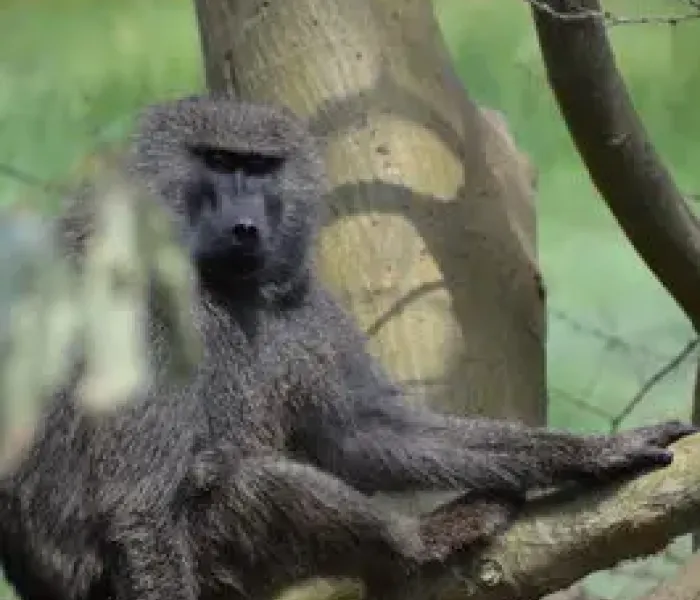
The Baboon in Arusha National Park
Olive baboons are easily recognizable by their muscular build, dog-like snout, and olive-gray coat. They live in large troops ranging from 10 to over 100 individuals, led by a dominant male. Their social structure is complex, with strong bonds formed through grooming, communication, and cooperative behaviors.
In Arusha NP, baboons are omnivorous and highly adaptable. They feed on a wide variety of foods, including fruits, seeds, leaves, insects, and occasionally small animals. This dietary flexibility allows them to thrive in different habitats throughout the park.
Visitors often encounter baboons along roads or near picnic sites, where their curiosity and opportunistic nature make them unafraid of humans. However, it is essential to admire them from a distance and avoid feeding them, as this can disrupt their natural behaviors and lead to human-wildlife conflicts.
Baboons are an integral part of the park’s ecosystem, helping to disperse seeds and maintain the balance of vegetation.
A deeper appreciation of the intricate relationships within Arusha National Park’s wildlife.
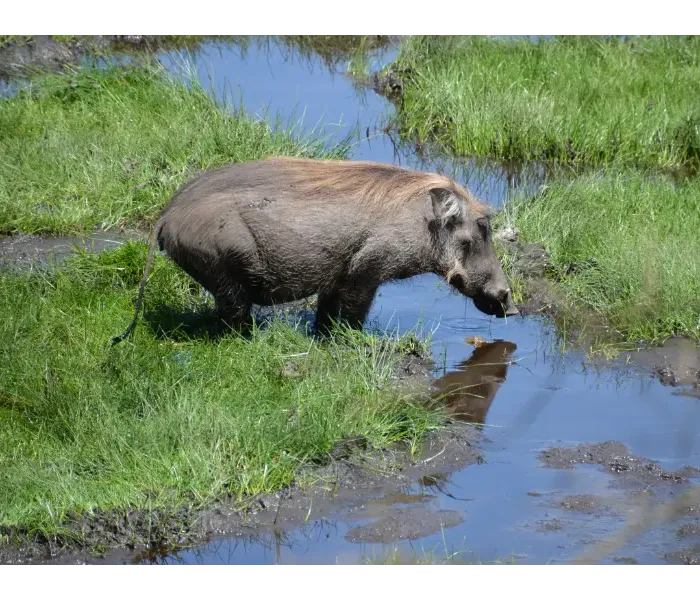
The Warthog (Pumba) in Arusha National Park
Warthogs are easily recognized by their large heads, protruding tusks, and facial warts, which are actually protective pads. These adaptations help them defend against predators and rival warthogs during fights. Despite their somewhat rugged appearance, warthogs are highly adaptive and play a vital role in the park’s ecosystem.
Their diet consists mainly of grasses, roots, and bulbs, which they dig up using their snouts and strong tusks. During the dry season, warthogs can survive on tougher vegetation, showcasing their resilience in challenging conditions. They are also known to kneel on their front legs while feeding, a behavior that helps them access shorter grasses and ground vegetation.
Warthogs often use abandoned burrows, especially those dug by aardvarks, for shelter and protection from predators like lions, leopards, and hyenas. They are social animals, typically living in small family groups called sounders, which usually consist of females and their young. Males tend to be more solitary, joining groups only during the breeding season.
Visitors to Arusha National Park are charmed by the warthogs’ quirky behaviors and their tendency to run off with tails held high like tiny flags.
These fascinating creatures add character to the park and are an essential part of its diverse wildlife.
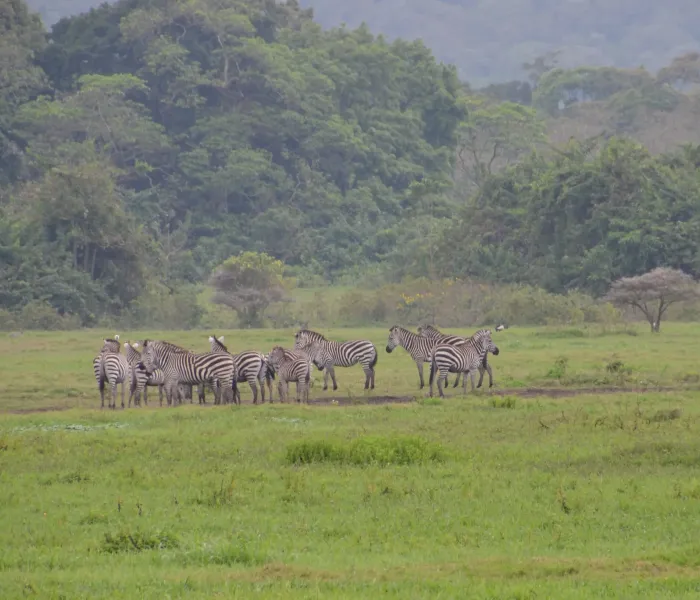
The Zebra in Arusha National Park
The zebra’s bold black-and-white striped pattern is one of nature’s most recognizable designs, and each zebra’s stripes are as unique as a human fingerprint. While the exact purpose of their stripes remains a topic of scientific research, theories suggest they help with camouflage, regulate body temperature, or deter biting insects.
In Arusha NP, zebras primarily graze on grasses, playing a key role in maintaining the health of the ecosystem by controlling vegetation growth and enriching the soil through grazing patterns. They are social animals that live in family groups, led by a dominant stallion. These groups often form larger herds during migrations or in open areas, providing safety in numbers against predators such as lions, hyenas, and leopards.
Zebras have an acute sense of hearing and excellent eyesight, which, combined with their swift running ability, make them adept at avoiding predators. They are also known for their strong family bonds, and individuals will often defend one another from danger.
Visitors to Arusha National Park are captivated by the beauty and grace of these animals, as well as their contribution to the park’s dynamic ecosystem.
Watching a herd of zebras against the backdrop of Mount Meru is a quintessential safari experience that highlights the natural splendor of Tanzania.

The Buffalo in Arusha National Park
The African buffalo is easily recognized by its massive, curved horns and muscular build. Bulls are generally larger and more solitary, while cows and calves form the core of herds, which provide safety through numbers. Herds have a complex social structure and are highly protective, particularly of their young.
Buffalo are grazers, feeding primarily on grasses, but they are also highly adaptable, eating shrubs and other vegetation when necessary. Their grazing habits play a critical role in shaping the landscape, promoting biodiversity by maintaining open areas and preventing overgrowth.
Despite their calm appearance, buffalo are considered one of the most dangerous animals in Africa due to their unpredictable nature and defensive behavior when threatened. In Arusha National Park, they are an important prey species for predators such as lions and hyenas, contributing to the park’s balanced ecosystem.
For visitors, observing a herd of buffalo in the wild is an awe-inspiring experience. Their sheer size and numbers, combined with their strong group dynamics, highlight the resilience and strength of Arusha National Park’s wildlife.
These iconic animals are a symbol of the untamed beauty of Tanzania’s wilderness.
Serengeti NP
The Serengeti in Tanzania is a breathtaking natural wonder, a vast, untamed wilderness that stretches as far as the eye can see. Known for its iconic, sweeping savannahs, this world-renowned national park is home to some of the most awe-inspiring wildlife on the planet. From the legendary Great Migration, where over two million wildebeest, zebras, and gazelles traverse the plains, to the thrilling sight of lions, elephants, and cheetahs in their natural habitat, the Serengeti offers an unparalleled safari experience.
At dawn, the golden light blankets the landscape, creating unforgettable moments for visitors, while sunsets paint the horizon in hues of pink and orange.
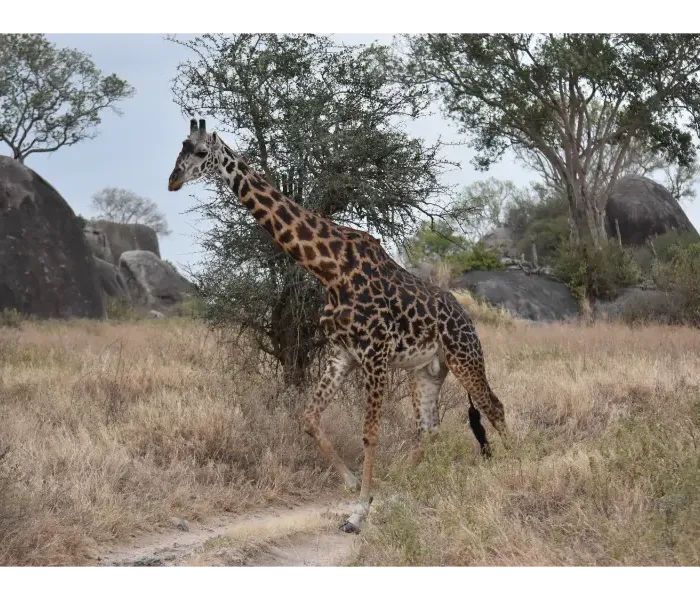
The Giraffe in the Serengeti
The Giraffe in the Serengeti
Masai giraffes are easily recognized by their distinctive coat patterns, which consist of irregular, leaf-like patches separated by lighter-colored lines. Each giraffe’s pattern is unique, much like a fingerprint. Adult males can reach heights of up to 5.5 meters, while females are slightly shorter. Their long necks and prehensile tongues allow them to reach leaves, buds, and fruits high up in trees, particularly from thorny acacias, which are a key part of their diet.
In the Serengeti ecosystem, giraffes play an important ecological role as browsers. By feeding on the upper canopy of trees, they help control vegetation growth and create habitats for smaller animals. They also serve as seed dispersers, contributing to the health of the environment.
Giraffes in the Serengeti are highly social animals, often forming loose groups known as “towers,” which can consist of a few individuals or dozens. While they appear calm and serene, giraffes are capable of defending themselves with powerful kicks, which can deter predators such as lions.
A visit to the Serengeti offers a chance to witness these extraordinary creatures in their natural habitat, where their elegance and unique adaptations embody the beauty and wonder of the African wilderness.
Watching giraffes silhouetted against the golden Serengeti sunsets is an unforgettable experience for any wildlife enthusiast.
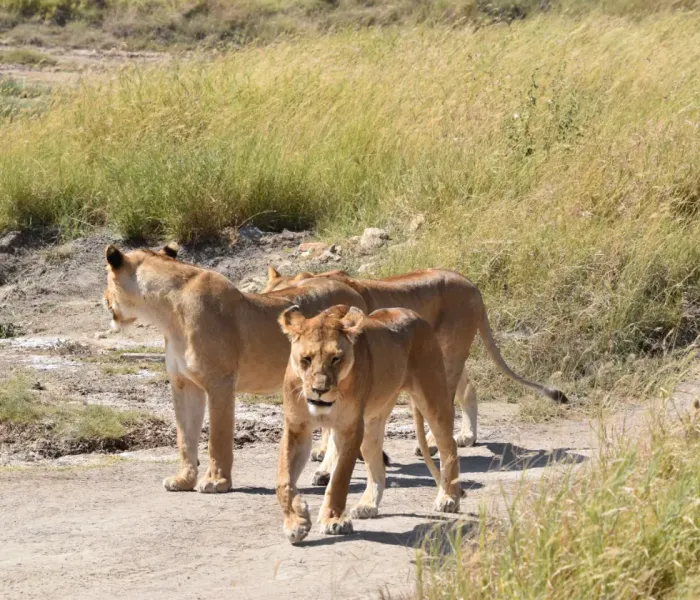
The Lion in the Serengeti
Lions are social animals and live in groups called prides, which typically consist of related females, their cubs, and a few dominant males. Prides in the Serengeti can range from as few as 3 to over 30 individuals, depending on the availability of food and territory size. The open plains of the Serengeti provide the perfect setting for lions to hunt, with prey ranging from zebras and wildebeests to buffalo and smaller antelopes.
These powerful predators are known for their cooperative hunting strategies. Lionesses, who are primarily responsible for hunting, work together to stalk and ambush prey, using their agility and strength to bring down animals much larger than themselves. Males, with their iconic manes, play a crucial role in defending the pride and its territory from rival males.
The Serengeti’s vast herds of herbivores, especially during the Great Migration, provide lions with abundant food resources. This makes the region one of the most lion-dense areas in the world. However, life in the wild is not without challenges, as lions must compete with other predators like hyenas and leopards and face threats from environmental changes and human-wildlife conflict.
Seeing a lion in the Serengeti is a truly awe-inspiring experience. Whether it’s observing a pride resting under the shade of an acacia tree or hearing the powerful roar of a male at dawn, these moments leave an indelible mark on visitors.
Their presence is essential to maintaining the balance of the Serengeti’s ecosystem.
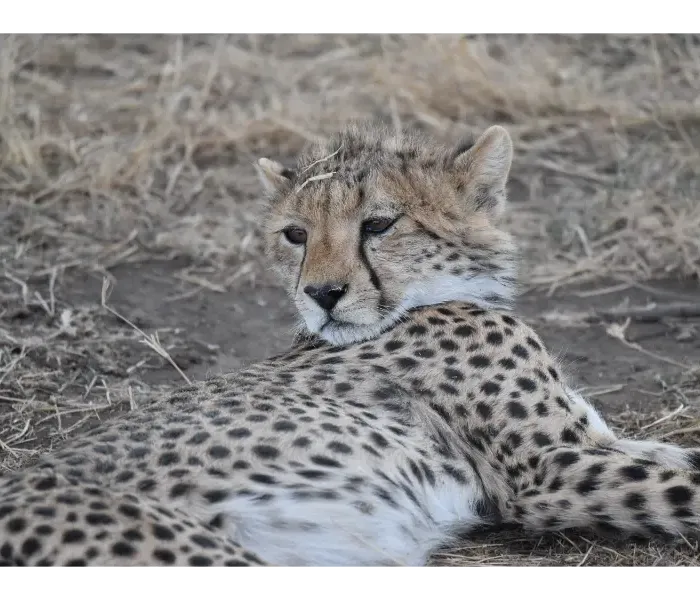
The cheetah of the Serengeti
Cheetahs are easily recognized by their slender bodies, long legs, and distinctive black “tear marks” running from the inner corners of their eyes down to their mouths. These markings help reduce glare from the sun and enhance their focus during hunts. Their spotted coat provides excellent camouflage, blending seamlessly into the Serengeti’s golden grasslands.
Unlike other big cats, cheetahs rely on speed rather than stealth or strength to catch their prey. Their diet mainly consists of smaller ungulates such as gazelles and impalas, as well as young or weaker members of larger species like wildebeests. Cheetahs hunt during the day, using their excellent eyesight to spot prey from a distance before executing a high-speed chase.
In the Serengeti, cheetahs are often seen alone or in small groups. Males sometimes form coalitions, typically made up of brothers, which increases their chances of hunting success and defending territory. Females are more solitary, raising their cubs alone and teaching them survival skills in the challenging environment.
Despite their prowess, cheetahs face significant challenges in the Serengeti. They are often outcompeted by larger predators such as lions and hyenas, which can steal their kills. Habitat loss and human-wildlife conflict also threaten their survival.
Watching a cheetah sprint across the Serengeti plains is a breathtaking spectacle, showcasing the beauty of nature’s adaptations.
A highlight for any visitor to this iconic African wilderness.
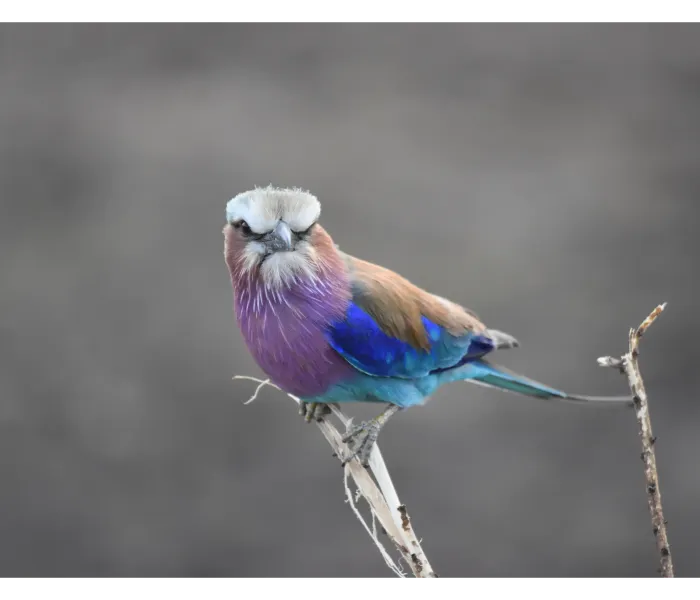
The Birds of the Serengeti
The Serengeti is not only famous for its iconic mammals but also for its incredible diversity of birdlife, making it a paradise for bird enthusiasts. With over 500 recorded species, the Serengeti offers a rich tapestry of avian life, from dazzlingly colorful species to majestic raptors soaring over the plains.
Among the Serengeti’s most striking birds are the lilac-breasted roller, known for its vivid plumage, and the superb starling, whose iridescent feathers sparkle in the sunlight. These birds add vibrant splashes of color to the landscape and are a favorite among photographers.
The Serengeti is also home to some of the world’s largest birds, including the ostrich, the tallest and fastest-running bird on land, and the Kori bustard, which is one of the heaviest flying birds. These ground-dwelling birds are often spotted striding across the plains.
For raptor enthusiasts, the Serengeti offers an array of birds of prey, such as the powerful martial eagle, the agile bateleur eagle, and various vultures, including the Rüppell’s griffon vulture. Vultures play a crucial role in the Serengeti’s ecosystem, scavenging and helping to keep the environment clean by consuming carrion.
The wetlands and rivers of the Serengeti are teeming with waterbirds like the elegant grey crowned crane, the saddle-billed stork, and flocks of flamingos that gather in certain areas. These habitats also attract herons, egrets, and kingfishers.
Birdsong fills the Serengeti at dawn, with species like the yellow-throated longclaw and the African hoopoe contributing to the symphony. Migratory birds, including swallows, storks, and warblers, add to the diversity, particularly during the wet season when the Serengeti becomes a temporary home for many species traveling from distant regions.
For visitors, the birds of the Serengeti offer a different perspective on the park’s biodiversity, showcasing the beauty and interconnectedness of life in this unique ecosystem.
The Serengeti’s birdlife is a mesmerizing highlight of any safari.
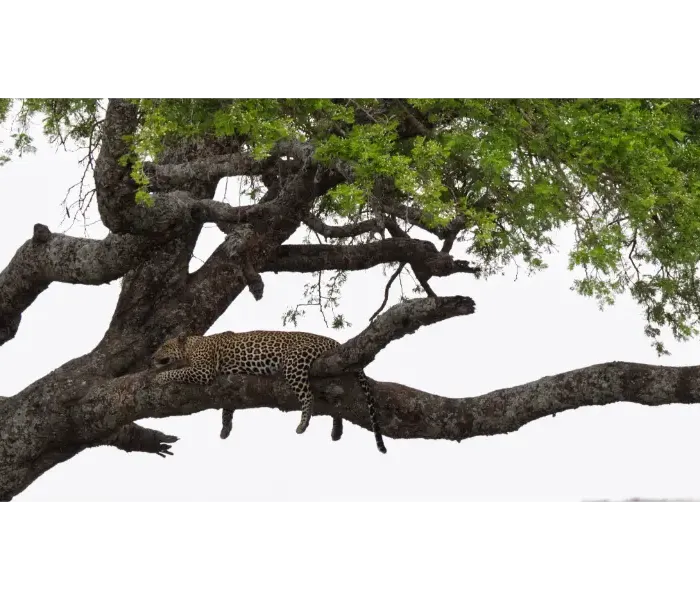
The Leopard in the Serengeti
Leopards are easily identified by their sleek, muscular bodies and distinctive rosette-patterned coats, which provide excellent camouflage in the dappled light of trees and undergrowth. Their adaptability allows them to thrive in a variety of environments, from the Serengeti’s open plains to its rocky kopjes and riverine forests.
Leopards are masters of stealth and ambush. They hunt primarily at night, relying on their acute vision and silent movements to stalk prey such as antelope, gazelles, and small mammals. Once a kill is made, leopards are known for their incredible strength, often dragging their prey high into trees to keep it safe from scavengers like hyenas and lions.
Unlike lions, leopards are solitary animals. They are territorial, with males occupying larger ranges that overlap with the smaller territories of several females. Each leopard marks its territory with scent markings and vocalizations, such as deep, hoarse coughs.
The Serengeti’s leopards are often found resting in trees during the day, their spotted coats blending seamlessly with the branches. This behavior not only keeps them safe from larger predators but also offers a vantage point to observe their surroundings.
While leopards are widely distributed across the Serengeti, their elusive nature and preference for dense cover mean that spotting one is a rare and exciting highlight of any safari.
A symbol of the Serengeti’s wild beauty and a testament to the park’s rich and diverse ecosystem.
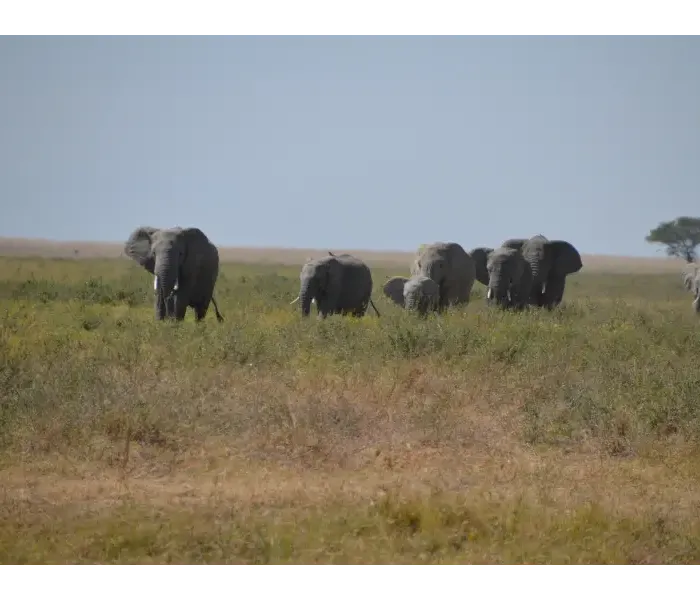
The elephant in the Serengeti
The African elephant (*Loxodonta africana*), the largest land mammal on Earth, is a majestic presence in the Serengeti. These gentle giants are an iconic symbol of the park, where they roam across its diverse landscapes, from open grasslands to wooded savannahs and riverine forests.
Elephants are highly social animals, living in matriarchal family groups led by an older, experienced female. These groups consist of mothers, aunts, and their calves, while males typically leave the group upon reaching maturity and lead more solitary lives or form small bachelor groups.
A single elephant can weigh up to 6,000 kilograms and stand over 3 meters tall at the shoulder. Their massive size is matched by their intelligence and complex social behaviors. Elephants communicate using a range of vocalizations, body language, and low-frequency rumbles that can travel several kilometers.
In the Serengeti, elephants are essential to the ecosystem. As herbivores, they consume large amounts of vegetation daily, feeding on grasses, leaves, bark, and fruits. Their foraging habits help shape the landscape by clearing overgrown vegetation and creating pathways for other animals. Additionally, their dung spreads seeds and provides nutrients for plants, supporting the park’s biodiversity.
Despite their size and strength, elephants face threats from poaching and habitat loss. Conservation efforts in the Serengeti have helped protect these incredible animals, ensuring they continue to thrive in this unique ecosystem.
Seeing a herd of elephants in the Serengeti is a breathtaking experience. Whether watching them bathe in a watering hole, observing calves play under the watchful eyes of their mothers, or marveling at their peaceful coexistence with other species, these encounters leave a lasting impression.
Serengeti’s wild beauty and the importance of preserving it for future generations.
Ngorongoro NP
Step into the enchanting Ngorongoro National Park and immerse yourself in the natural wonder of the Ngorongoro Crater, one of Africa’s most iconic destinations. This UNESCO World Heritage Site, often hailed as the “Eighth Wonder of the World,” is an ancient volcanic caldera that now cradles a breathtaking landscape teeming with life and adventure.
The crater itself is like a vast green bowl, encircled by towering walls over 600 meters high. Within its depths lies an extraordinary array of wildlife: herds of majestic elephants, powerful lions, elusive black rhinos, and countless zebras and wildebeest. This is one of the few places on Earth where you can witness the legendary “Big Five” – lion, leopard, rhino, elephant, and buffalo – all in a single day.
Ngorongoro is celebrated for its unique ecosystems, from lush grasslands to shimmering lakes adorned with thousands of pink flamingos. Bird enthusiasts will delight in spotting more than 400 species of birds that call this paradise home.
Take a drive along the crater rim and soak in panoramic views that will leave you speechless. Or embark on a guided walk with a Maasai warrior, gaining insight into the timeless culture of these proud nomadic herders who live in harmony with nature. Stay in a luxurious lodge perched on the crater’s edge and savor the magic of sunrise over one of the world’s most awe-inspiring natural wonders.
Ngorongoro National Park is more than just a destination – it’s a soul-stirring experience where adventure, wildlife, and culture come together to create memories that last a lifetime.
Visit Ngorongoro and uncover the magic of Tanzania’s most spectacular treasure!
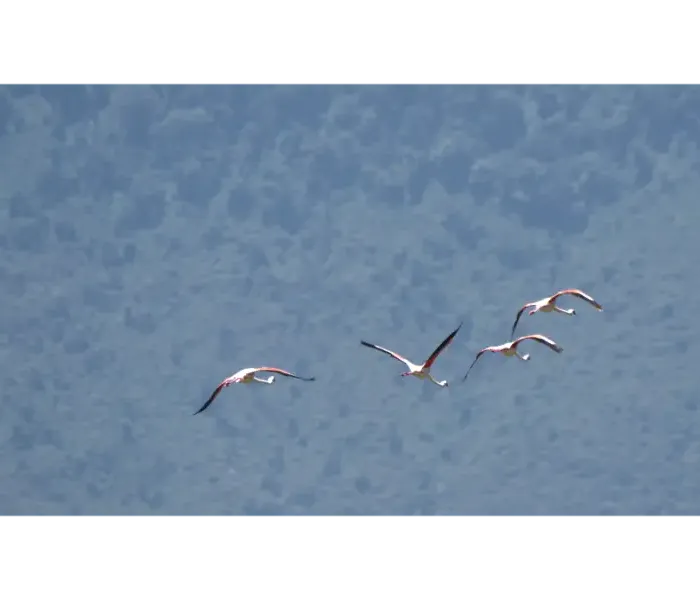
Flamingos in Ngorongoro Conservation Area: A Natural Wonder
In the heart of the Ngorongoro Conservation Area, flamingos bring vibrant life to the soda lakes, particularly Lake Magadi at the crater’s base.
The alkaline waters of Ngorongoro’s soda lakes are rich in cyanobacteria and algae, which form the primary diet of flamingos. The high salinity and mineral content of the lakes make them inhospitable to most wildlife, but for flamingos, they are an essential refuge. These specialized feeders thrive in the harsh conditions, demonstrating remarkable adaptations to their environment.
Lesser Flamingos, known for their deep pink coloration and dark bills, they primarily consume microscopic algae.
Greater Flamingos, larger and paler in comparison, they filter-feed on small invertebrates and algae.
Flamingos are highly social birds, often seen in large flocks that can number in the thousands. Their synchronized movements while feeding or flying create a captivating display. During breeding seasons, these flocks migrate to suitable nesting sites, leaving behind shimmering trails of pink across the skies.
Flamingos play a vital role in maintaining the ecological balance of the soda lakes. By feeding on algae and other microorganisms, they help control the growth of these populations, preventing imbalances in the lake’s ecosystem.
For visitors, the sight of flamingos at Ngorongoro is both serene and awe-inspiring. The contrast of their vibrant pink hues against the blue waters and crater walls makes this a photographic and wildlife experience unlike any other.
The delicate interplay of life and environment in one of Africa’s most extraordinary landscapes.

Lions in Ngorongoro Conservation Area
The Ngorongoro Conservation Area is home to one of the densest populations of lions in Africa, offering visitors a chance to witness these majestic predators in their natural habitat. Within the Ngorongoro Crater, approximately 60-70 lions roam, forming tightly-knit prides that thrive in this unique ecosystem.
The enclosed nature of the crater provides an abundance of prey, including zebras, wildebeests, buffaloes, and gazelles, making it an ideal hunting ground for lions. The crater’s diverse terrain, with its grasslands, forests, and swampy areas, supports lions throughout the year. They often hunt in the cool mornings or evenings and spend much of the day resting under the shade.
Despite the rich prey availability, the crater’s lions face genetic challenges due to inbreeding caused by limited migration in and out of the crater. Conservation efforts aim to monitor their health and ensure the population remains stable.
A profound glimpse into the lives of Africa’s most iconic predators.
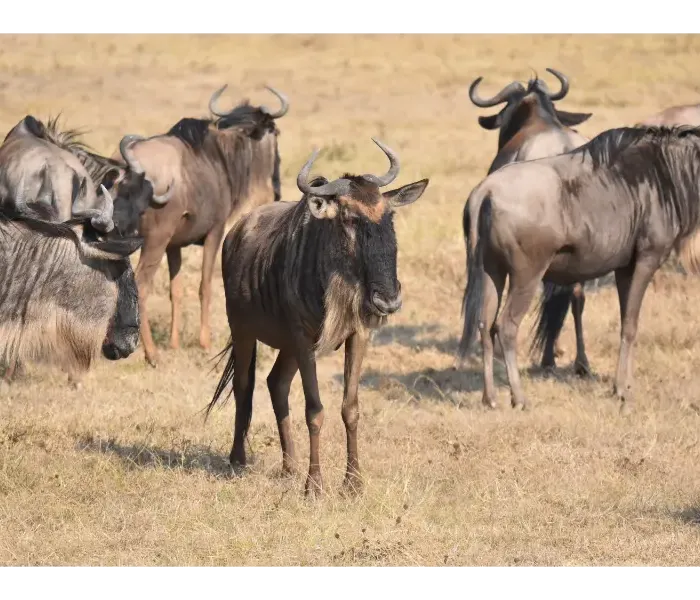
Wildebeest in Ngorongoro Conservation Area
The Ngorongoro Conservation Area is home to thousands of wildebeests, making them a vital part of the ecosystem. These herbivores are most famously known for their role in the Great Migration, but in Ngorongoro, many reside year-round within the crater.
Wildebeests thrive in the open grasslands and plains of the Ngorongoro Crater, where they graze on the abundant short grasses. Their grazing patterns play a crucial role in maintaining the balance of the ecosystem, ensuring the grasslands remain healthy for other herbivores. They are often found in mixed herds alongside zebras, which help detect predators such as lions, hyenas, and cheetahs.
While many wildebeests migrate annually across the Serengeti-Mara ecosystem, the resident populations in Ngorongoro remain relatively stable, benefiting from the crater’s year-round food and water availability. During the migration season, visiting herds may pass through, temporarily swelling the population.
The sight of wildebeests grazing in the vast crater, often with predators lurking nearby, creates a dramatic and unforgettable wildlife experience.
Symbolize of the harmony and interconnectedness of life in this remarkable natural wonder.
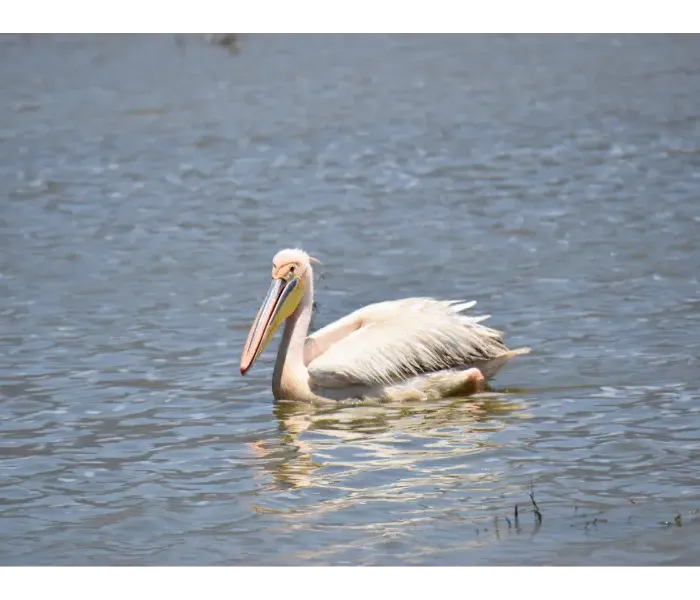
Pelicans in Ngorongoro Conservation Area
Pelicans are a striking presence in the Ngorongoro Conservation Area, particularly around the shallow soda lakes such as Lake Magadi within the crater. These large water birds are a key feature of the area’s rich avian diversity, offering visitors a chance to observe their unique behaviors in a dramatic setting.
The most commonly seen species is the Great White Pelican. Recognizable by their massive wingspan, pale plumage, and distinctive yellow bills with large throat pouches, these pelicans are perfectly adapted for their aquatic lifestyle.
Pelicans thrive in the alkaline waters of Lake Magadi, where they feed primarily on fish. Using their cooperative hunting strategy, they form groups to corral fish into shallow waters before scooping them up with their pouches. Their large flocks are a mesmerizing sight as they glide gracefully over the water or rest in the shallows.
As apex fish predators in their habitat, pelicans help maintain the balance of aquatic ecosystems. They also serve as indicators of the health of the lake environment.
A unparalleled wildlife viewing experiences.
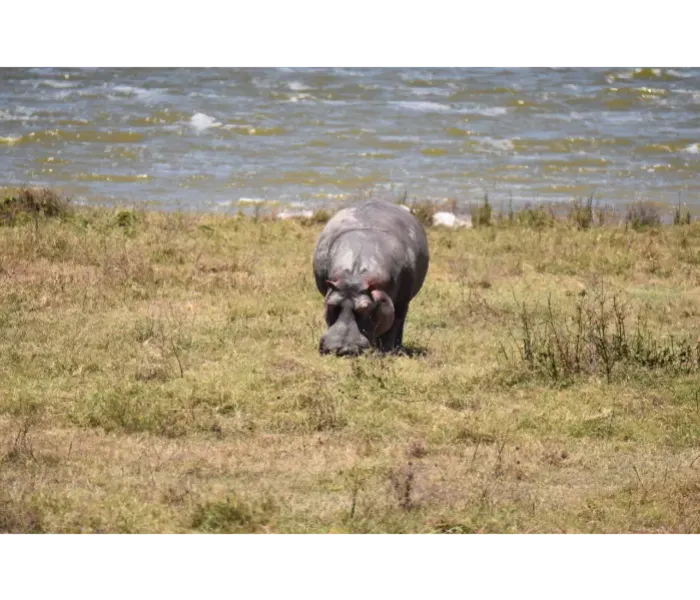
Hippos in Ngorongoro Conservation Area
The Ngorongoro Conservation Area is home to a significant population of hippos, most commonly seen in the freshwater pools and swamps within the Ngorongoro Crater. These massive herbivores are a favorite among visitors due to their size, behavior, and unique role in the ecosystem.
Hippos spend much of their time submerged in water during the day to stay cool under the African sun. The crater’s permanent water sources, like the Hippo Pool near Mandusi Swamp, provide an ideal refuge. At night, hippos emerge from the water to graze on grasses in the surrounding areas, consuming up to 40 kilograms of vegetation in a single night.
Hippos are social animals, often seen in groups called pods, which can consist of several individuals led by a dominant male. Despite their seemingly calm demeanor, hippos can be aggressive when defending their territory or young.
Hippos play a critical role in nutrient cycling within aquatic ecosystems, as their dung enriches the water and supports fish populations.
A fascinating and unforgettable wildlife experience.

Rhinos in Ngorongoro Conservation Area
The Ngorongoro Conservation Area is one of the few places in Tanzania where visitors can see the critically endangered black rhinoceros (*Diceros bicornis*) in the wild. These majestic creatures are a rare and iconic sight, symbolizing the importance of conservation efforts in the region.
Black rhinos are most commonly spotted in the open grasslands and along the edges of the crater. They are browsers, feeding on shrubs, small trees, and herbs. Their prehensile upper lip helps them grasp twigs and leaves, showcasing their remarkable adaptation to their environment.
The population of black rhinos in the Ngorongoro Crater is small but stable, thanks to strict protection measures. Rangers closely monitor these animals to safeguard them from poaching, which has historically decimated rhino populations across Africa. The crater’s natural barriers provide an additional layer of protection.
Spotting a black rhino in Ngorongoro is a highlight for any safari enthusiast. With their powerful build, distinctive horns, and ancient appearance, they offer a glimpse into a prehistoric past while underscoring the urgent need for continued conservation efforts.
Their presence adds to the uniqueness of this remarkable UNESCO World Heritage Site.
Tarangire NP
Step into the breathtaking beauty of Tarangire National Park, one of Tanzania’s best-kept secrets. Here, you’ll encounter an unmatched abundance of wildlife, including some of Africa’s largest elephant herds. The park is renowned for its iconic baobab trees, standing tall and majestic like ancient guardians of the land.
Tarangire promises a safari experience like no other. Witness lions stalking their prey, graceful giraffes wandering through the bush, and herds of zebras and wildebeest moving along the riverbanks. The Tarangire River, winding through the park, serves as the lifeblood of this vibrant ecosystem. During the dry season, it becomes a vital gathering point for countless animals, offering unparalleled opportunities for wildlife viewing and photography.
For bird lovers, Tarangire is nothing short of paradise. With over 550 species, the park is home to dazzling kingfishers, majestic fish eagles, and the impressive kori bustard, the world’s heaviest flying bird.
Tarangire is a place where the magic of Africa comes alive, a destination that stirs your soul with adventure and leaves you with memories to last a lifetime.
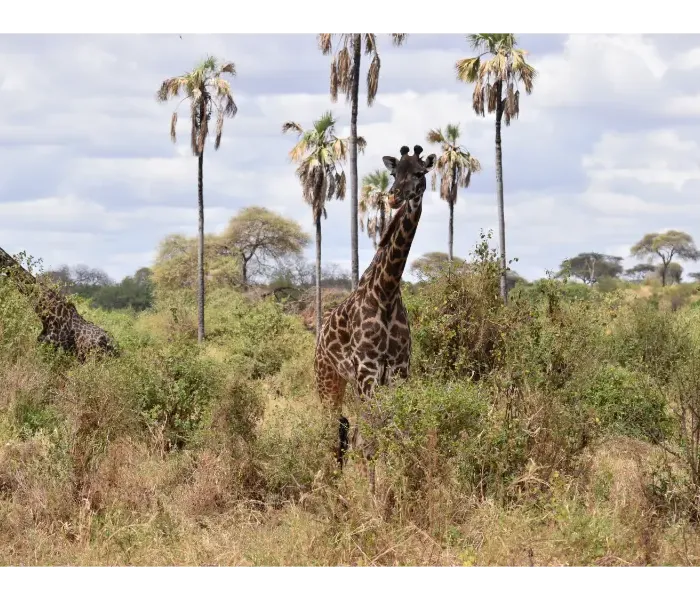
Giraffe in Tarangire NP
The giraffe, a majestic icon of the African savanna, thrives in Tanzania’s Tarangire National Park. Known as the tallest land mammal, giraffes are a striking sight, with their long necks, distinctive spotted patterns, and graceful movements. In Tarangire, they inhabit open woodlands and savanna plains, particularly near the park’s iconic baobab trees.
Giraffes in Tarangire are part of the Masai giraffe subspecies, characterized by jagged, irregular patches on their coats. They are highly adapted to their environment, feeding primarily on acacia trees using their prehensile tongues to navigate around thorns. Their height provides a unique advantage, allowing them to reach foliage that other herbivores cannot access.
Tarangire is a critical habitat for giraffes, offering a sanctuary with ample food, water, and minimal threats from predators. Visitors can often observe these animals in family groups, known as towers, as they browse or move across the park’s vast landscapes.
The giraffe population in Tarangire is also essential for ecological balance, contributing to seed dispersal and supporting plant diversity. Protecting giraffes in the park ensures not only their survival but also the health of the broader ecosystem, making them a cornerstone species in this remarkable wilderness.
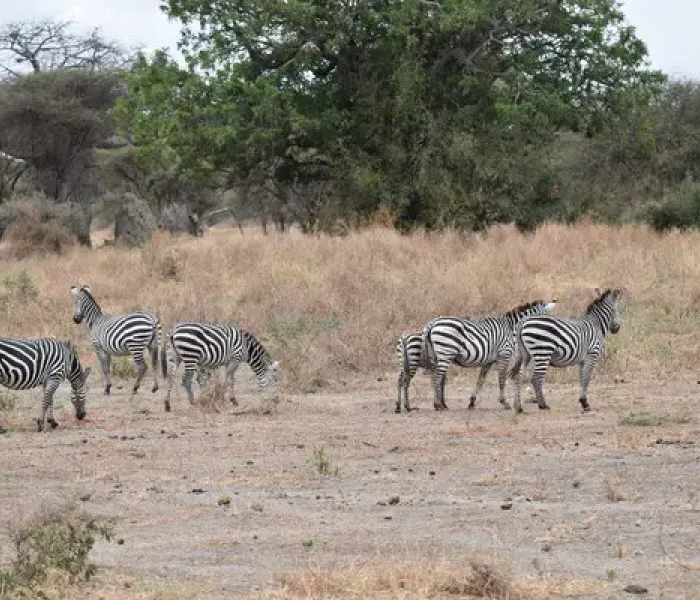
The zebra of Tarangire National Park
The zebra is a quintessential feature of Tarangire National Park, adding to the vibrant tapestry of wildlife in this Tanzanian haven. The park is home to large populations of plains zebras, easily recognized by their iconic black-and-white stripes, which serve as both camouflage and a natural deterrent against biting insects.
In Tarangire, zebras roam the vast savannas and grasslands, often in mixed herds with wildebeest and other grazers. This coexistence provides safety in numbers, reducing the risk of predation by lions, cheetahs, and hyenas. Zebras are highly social animals, living in family groups led by a dominant stallion and characterized by strong bonds between members.
The zebras’ grazing habits play a vital role in the park’s ecosystem. By feeding on tall grasses, they maintain the balance of vegetation, creating conditions for other herbivores to access shorter grasses. Their movements also contribute to seed dispersal, supporting plant diversity.
Tarangire’s seasonal migrations often showcase dramatic scenes of zebras traveling in large numbers to find water and fresh grazing areas, particularly during the dry season. These migrations highlight the zebras’ resilience and adaptability.
A symbol of life in Tarangire’s dynamic and thriving wilderness.
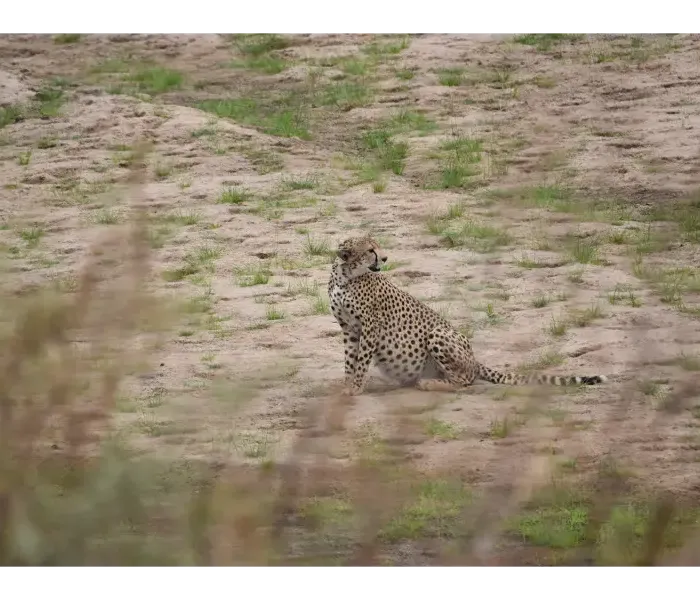
Cheetah in Tarangire National Parc
The cheetah, the world’s fastest land animal, is a rare yet captivating sight in Tarangire National Park. Known for its slender build, spotted coat, and exceptional speed, the cheetah is built for high-speed pursuits, capable of reaching up to 112 km/h (70 mph) in short bursts.
In Tarangire, cheetahs are typically found in open grasslands and sparsely wooded areas, where their speed and agility are most effective for hunting. They primarily prey on smaller ungulates like impalas and young gazelles, relying on stealth and a quick sprint to secure their meal. Unlike other big cats, cheetahs are diurnal, hunting during daylight hours to avoid competition with nocturnal predators like lions and leopards.
Cheetahs in Tarangire face several challenges, including habitat encroachment and competition for prey. Despite this, the park provides an essential refuge with its diverse landscapes and prey abundance. Conservation efforts are critical to preserving their fragile populations, as cheetahs are listed as vulnerable globally.
Spotting a cheetah in Tarangire is a thrilling experience, showcasing not only their speed but also their grace and adaptability.
These remarkable cats embody the beauty and challenges of life in the African wilderness.
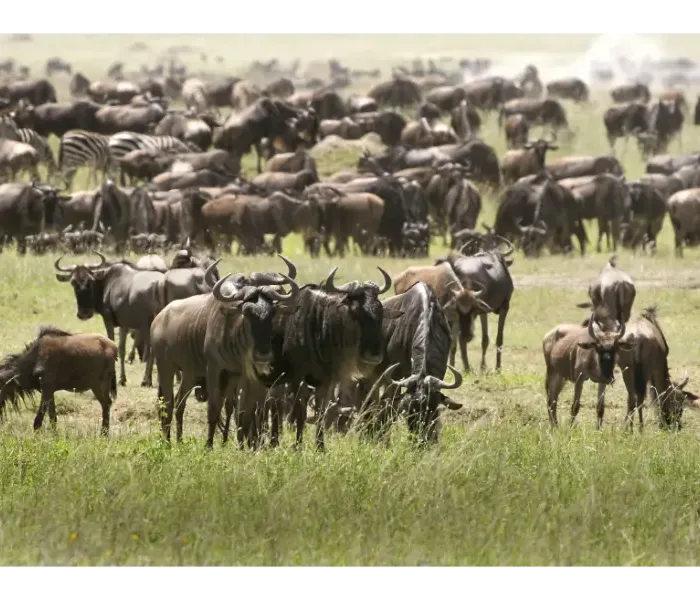
Wildebeests in Tarangire
The wildebeest, also known as the gnu, is a key species in the diverse ecosystem of Tarangire National Park in Tanzania. These robust herbivores are famous for their annual migrations, although in Tarangire, many are resident populations that play an essential role in the park’s ecological balance.
Wildebeests in Tarangire thrive in the park’s expansive grasslands and floodplains, where they graze on nutrient-rich grasses. Their social structure typically includes large herds, often mixing with zebras and other herbivores, which provides added protection against predators such as lions and hyenas.
During the dry season, wildebeests in Tarangire migrate within the region in search of water and food, concentrating around the Tarangire River, a crucial lifeline for the park’s wildlife. This seasonal movement creates spectacular wildlife-viewing opportunities for visitors.
Ecologically, wildebeests contribute significantly to the health of the savanna. Their grazing patterns help control grass growth, reduce wildfire risks, and promote biodiversity. Additionally, their movements aid seed dispersal, supporting vegetation regeneration.
The presence of wildebeests in Tarangire enhances its status as a vital wildlife refuge, showcasing the intricate connections between species and the environment.
Their resilience and role in the ecosystem highlight their importance in maintaining the park’s dynamic balance.
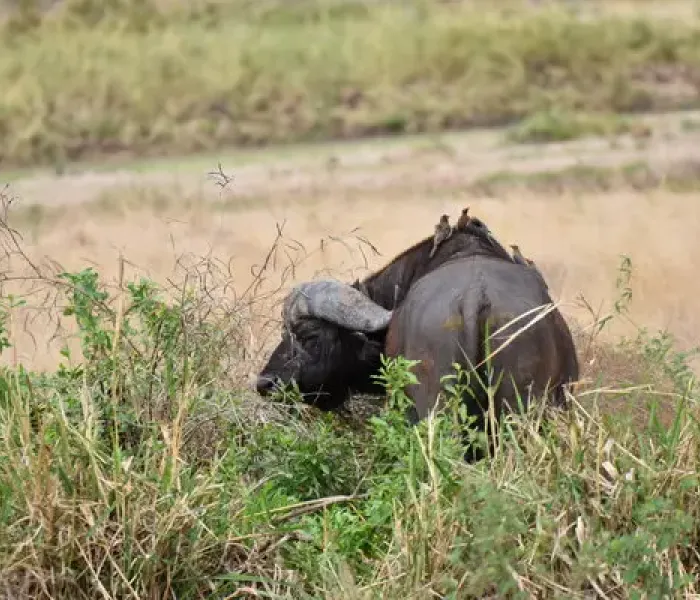
Buffalo herds in Tarangire
The African buffalo, one of the “Big Five,” is a prominent species in Tarangire National Park, known for its strength, resilience, and vital role in the ecosystem. These large herbivores are commonly found in the park’s grasslands, woodlands, and near water sources, where they gather in herds for protection and social interaction.
Buffalo herds in Tarangire can range from a few dozen to hundreds of individuals, often including females, calves, and a dominant bull. Older males, known as “dagga boys,” may live in smaller bachelor groups or solitary lives. Buffalo are highly territorial and have a reputation for being unpredictable, which makes them both fascinating and formidable.
As grazers, buffalo play a crucial role in maintaining the park’s grassland ecosystems. Their grazing habits control vegetation, allowing for plant diversity and creating habitats for other species. They are also a significant prey species for predators like lions, which depend on buffalo to sustain their populations.
In Tarangire, the buffalo thrives in a relatively undisturbed environment, supported by the park’s conservation efforts. Their presence contributes to the park’s biodiversity and provides an unforgettable wildlife experience for visitors.
The intricate balance of life in this iconic African landscape.
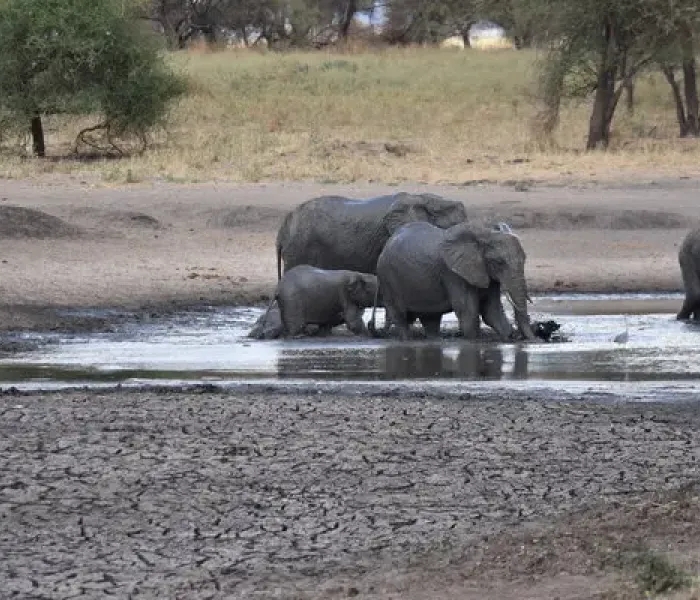
Elephant in Tarangire NationalParc
Elephants are among the most iconic and significant species in Tarangire National Park, known for harboring one of the largest elephant populations in Tanzania. These majestic giants roam the park’s diverse landscapes, from open savannas to dense woodlands, often gathering in large herds, particularly during the dry season.
Tarangire’s elephants are central to the park’s ecosystem. As keystone species, they shape the environment through their feeding habits, breaking branches, uprooting trees, and creating pathways that benefit other wildlife. They also play a critical role in seed dispersal, promoting plant diversity and regeneration.
One of the park’s defining features is its reliable water sources, including the Tarangire River, which attracts elephants during the dry season. Visitors can observe herds congregating near the river to drink, bathe, and socialize, offering remarkable wildlife viewing experiences.
The presence of elephants in Tarangire also holds significant cultural and conservation value. Efforts to protect these gentle giants are essential to preserving the park’s biodiversity and mitigating human-wildlife conflicts in surrounding areas. Tarangire provides a sanctuary where elephants can thrive, contributing to the park’s status as one of Africa’s premier wildlife destinations.
A crucial stronghold for elephant conservation.
Kilimanjaro NP
Kilimanjaro National Park, located in Tanzania, is home to the iconic Mount Kilimanjaro, the highest free-standing mountain in the world and the tallest peak in Africa. This UNESCO World Heritage Site attracts adventurers and nature enthusiasts from around the globe who seek to climb its majestic summit or explore the diverse ecosystems found along its slopes.
Kilimanjaro offers a unique experience due to its ecological zones, which range from tropical rainforests at the base to alpine deserts and a snow-capped peak. The park hosts rich biodiversity, including elephants, buffaloes, leopards, and numerous bird species. Hikers can also admire exotic plants and flowers along the way.
Climbs to Kilimanjaro typically start via popular routes such as Marangu, Machame, and Lemosho, each offering its own charm and challenge. The trek to Uhuru Peak provides not only a physical challenge but also breathtaking views and unforgettable moments above the clouds.
In addition to mountain climbing, the park also offers opportunities for day hikes, photography tours, and cultural interactions with the local Chagga people, renowned for their hospitality and rich traditions.
Kilimanjaro National Park is more than just a destination; it is a symbol of adventure, perseverance, and natural beauty that inspires and challenges visitors.
Masai
Step into a timeless world and discover the fascinating culture of the Maasai people in Tanzania. Nestled in the heart of East Africa, the Maasai community opens its arms to visitors eager to experience their unique way of life. Renowned for their striking attire, rich traditions, and unwavering connection to nature, the Maasai offer an unforgettable journey into a simpler, more meaningful existence.
Join them in their daily routines—herding livestock, crafting intricate beadwork, and preparing traditional meals. Engage in vibrant cultural dances, hear captivating stories passed down through generations, and witness rituals that have shaped their identity for centuries. Surrounded by the breathtaking landscapes of the Serengeti and Ngorongoro Crater, this experience blends culture with adventure.
More than a visit, this is an opportunity to connect deeply with a community that values harmony with nature and resilience in the face of modern challenges. Whether it’s sharing a laugh with a Maasai elder or learning to throw a spear like a warrior, you’ll leave with memories—and perspectives—that will last a lifetime.
Embark on this enriching journey and discover the beauty of humanity in its purest form. The Maasai await to share their world with you.



